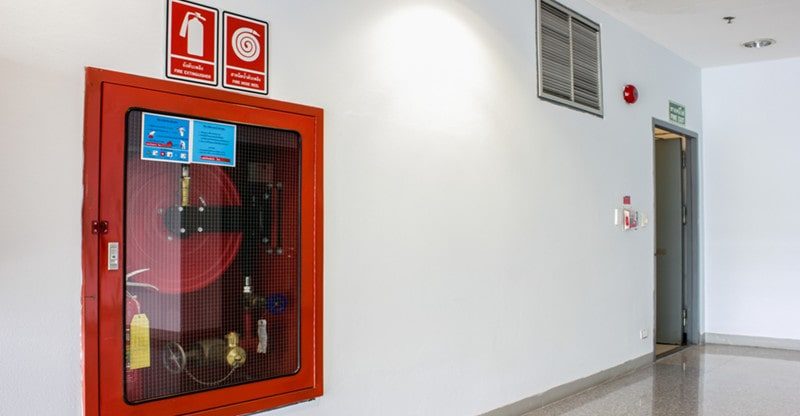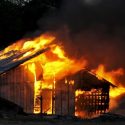Fire Safety: Step by Step Guide to Perform Fire Risk Assessment in Your Company
In any workplace, the most valuable thing is the worker’s life which might be at stake in case of an unwanted incident or happening.
According to the regulatory reform (fire safety) act, if you own a company (non-domestic property), providing fire safety to the individual who works or visits the company is your legal responsibility. You should have a written record of fire risk assessment for commercial premises.
For fire prevention and reducing the risk of fire, you should have to conduct a fire risk assessment. that safety protocol has to be reviewed regularly.
Fire safety assessment helps to protect the lives of individuals, documents, and sensitive equipment.
Here are the steps to perform a fire risk assessment to help reduce the risk of getting a fire outbreak. You can also follow these steps for assessing the fire risk at your home. Alternatively, for fire risk assessment of the extended property (businesses), you can hire professionals from Safetynet Scotland company.
Steps of doing fire safety risk assessment
Between the years 2005 to 2015, 85 deaths were recorded due to fire incidents in the non-domestic premises. Considering these life damages, the NIOSH, combined with the other health and safety organizations, formulated a hazard alert to reduce the fire risk.
The aim of these fire risk assessments is to identify the potential cause of the fire outbreak. They then need to take preventive measures and adopt policies that can save lives and property. These 5 fire safety risk assessments are:
Identifying potential sources (Fire triggering hazards)
Identification of potential fire hazards is the first step of risk assessment for fire safety. Removing the sources of incineration and safely using it reduces most of the risk of getting fired.
In oil extraction and fuel-producing companies, fuel along with burning agents is the main reason for the incident. In the textile, medicine, paper, and other industries, you can identify the source through a fire tetrahedron.
For example, if the equipment generating heat gets fuel and oxygen, this will be the fire triggering source.
Other sources of fire loss could be the locked door, improper ventilation, and absence of an appropriate path of exit.
Pick out the people at risk
The second step involved identifying the people who are most vulnerable if an environment is fired. Although the individuals of all age groups in the premises are at risk, the one who is in the confined space where the incident happens is at higher risk.
For instance, the person working with the alcohol near the flame has the highest probability of burning if the alcohol catches fire. In a nutshell, the person working with hazardous substances is more vulnerable. Picking out at-risk people makes the assessment task easier and quicker.
Risk evaluation and checking fire safety measures
After evaluating the first and second steps of fire safety you have to take some measures to reduce the risk and remove or lessen the fire hazards.
In this step, the fire risk assessment inspector has to check to find out whether the measures that are already adopted by the company are enough to secure the lives and property. If the hazardous material is unnecessary, you have to remove it. If the material that may trigger fire is required for manufacturing purposes, it can be used with precautions.
Contrary to the other two steps, this step does not involve any type of data collection. In the evaluation step, the professional fire safety personnel keenly observe the safety measures like removing wastes like paper that fasten the fire or increase the risk of damage.
Educate the people what to do, make a plan and keep all records
After maintaining the fire safety measures, the company owner has to educate and train the people. In the training session, you have to tell the worker about the precautionary measures and specify the role of the employees if the premises caught fire.
Making a plan is also necessary to protect the lives of individuals. Planning includes the presence of a fire extinguisher and an alternative route to escape.
Following this, you should have a written record of all potential fire hazards and the preventive measures you have adopted to safeguard your employees.
Reevaluation of the fire safety risk assessment
Fire safety risk assessment is an ongoing process. You should have to change the record from time to time and adopt the new plan or precautionary measure in case of the addition of any equipment.
Reevaluation steps also include identifying the high-risk people and fire hazards. Followed by checking safety measures, training people, making plans, and maintaining records.
Review the fire risk measure helps reduce the chances of getting fire and saves you from the loss.
Few questions for assessing fire risk
Here are the questions that will help you out in assessing the safety measures:
- Is there any escape route that does not need any key to be opened?
- Could the emergency exit have caught fire?
- Is there any lightning source in the escape route that will remain glowing even if the power supply of the whole premises shuts down?
- Does the worker have enough education to deal with the small degree of fire?
- Does each worker have an action plan in case of a fire emergency?



